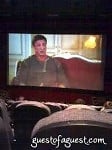 After leaving the theater from the one-day rescreening of Rambo: First Blood, a welling sensation engulfed me that I could not figure out until I got home. This sensation was disappointment.
After leaving the theater from the one-day rescreening of Rambo: First Blood, a welling sensation engulfed me that I could not figure out until I got home. This sensation was disappointment.
The disappointment was not directed towards the original movie. My first impression of First Blood was that it was pretty good. While it was lacking in visual effects that we now take for granted in modern movies, campy dialogue, and even the cheesy power ballad at the end that tells you this was made in the 80s.
It also made up for it with a good pace, stunts that are all that much more amazing from the lack of cgi, and a storyline that effectively emphasizes the frustration of being a war hero that can’t even get a job in the real world.
It became easy to see what made the later Rambo movies so bad when you see that it began with Stallone’s protagonist going from a symbol of the victim of the American war machine to a symbol of American pride in the sequels.
Even the opening, which involved an interview with Stallone and how he discussed the making of the 2008 Rambo movie was worthwhile. Even though one should always expect the director to speak about their creation with a passion, he also spoke of some of the issues with making Rambo that were worth listening to. One emphasis Stallone kept pushing was that, despite how critics thought how violent the movie was, he actually used “restraint” since the tales he heard from Myanmar included things much, much worse.
The most astonishing remark he gave was on how he had a difficult time finding actual Burmese actors due to the fear people had from their government until Maung Maung Kim (who played the major villain to the movie and was an actual freedom fighter himself) spoke up for how he felt the movie needed to be made to make people aware of what was going on there even at the risk of losing his own family to the secret police.
When you hear about things like this, you have to give Stallone and his pure-testosterone movie some appreciation for trying to take a problem happening today, filming it several kilometers away from the actual danger zone they were talking about, and making it more readily digestible by applying it into an action flick formula.
If there was anything that I found disgusted about in this theater, it was the total execution. The movie was unusually low volume, the lighting of it was really dark. The interview was a little easier to see, but still suffered from some volume issues. There were also little slides in-between the different parts of the movie that looked made out of Powerpoint. This would not be a surprise as the audience was treated to the alternate ending and then a Microsoft desktop!
For this, I shake my finger in disapproval, Fathom Events: shame on you for spoiling good intentions with your half-baked execution.


.jpg)
.jpg)



.jpg)
.jpg)
.jpg)

.jpg)
.jpg)

.jpg)